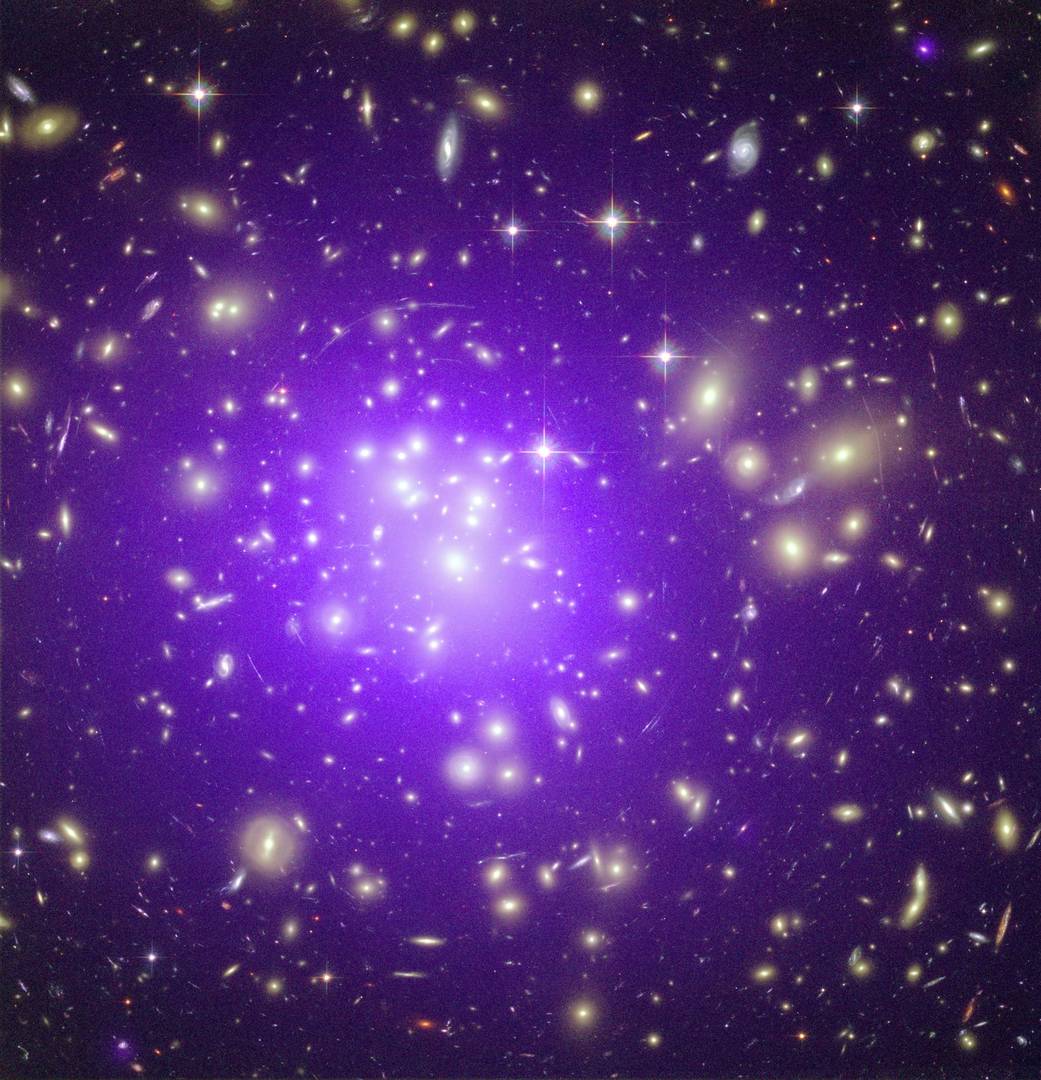
A massive cluster of galaxies located about 2.3 billion light years away, Abell 1689, shows signs of merging activity. Hundred-million-degree gas detected by NASA’s Chandra X-ray Observatory is shown as purple in this image, while galaxies from optical data from the Hubble Space Telescope are colored yellow. The X-ray emission has a smooth appearance, unlike other merging systems such as the Bullet Cluster or MACS J0025.4-1222. The temperature pattern across Abell 1689 is more complicated, however, possibly requiring multiple structures with different temperatures.
The long arcs in the optical image are caused by gravitational lensing of background galaxies by matter in the galaxy cluster, the largest system of such arcs ever found. Further studies of this cluster are needed to explain the lack of agreement between mass estimates based on the X-ray data and on the gravitational lensing. Previous work suggests that filament-like structures of galaxies are located near Abell 1689 along our line-of-sight to this cluster, which may bias mass estimates using gravitational lensing.
For more information on NASA’s Chandra X-Ray Observatory, visit www.nasa.gov/chandra.Image Credit: X-ray: NASA/CXC/MIT/E.-H Peng. Optical: NASA/STScI


























